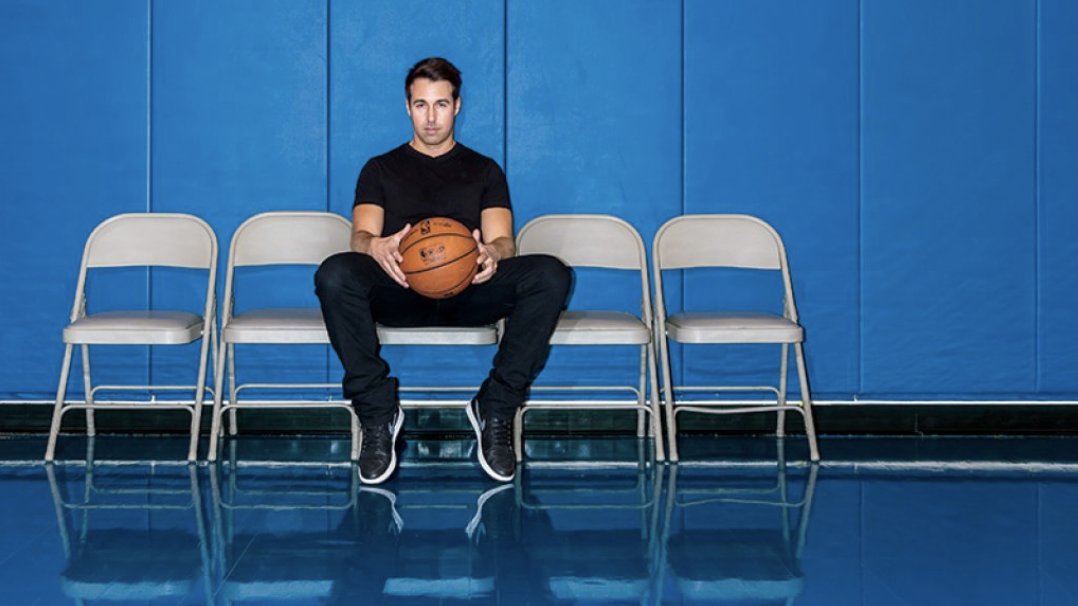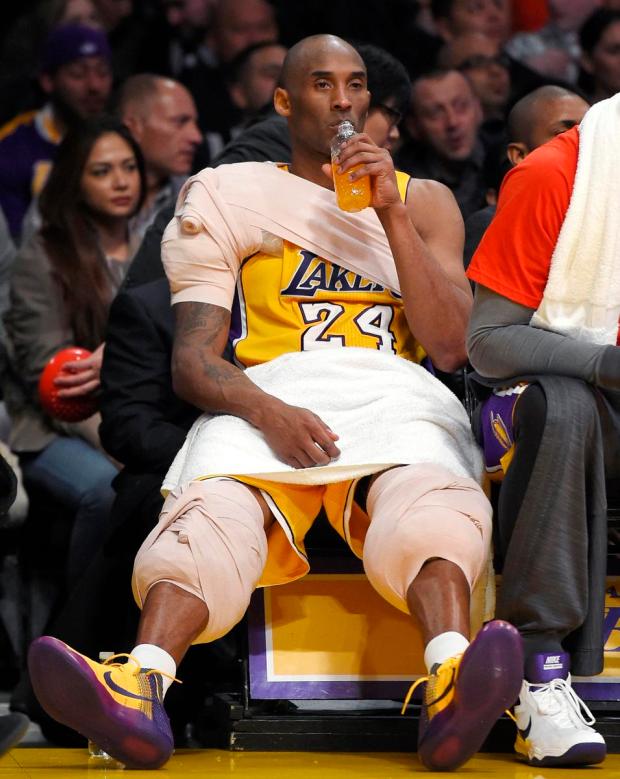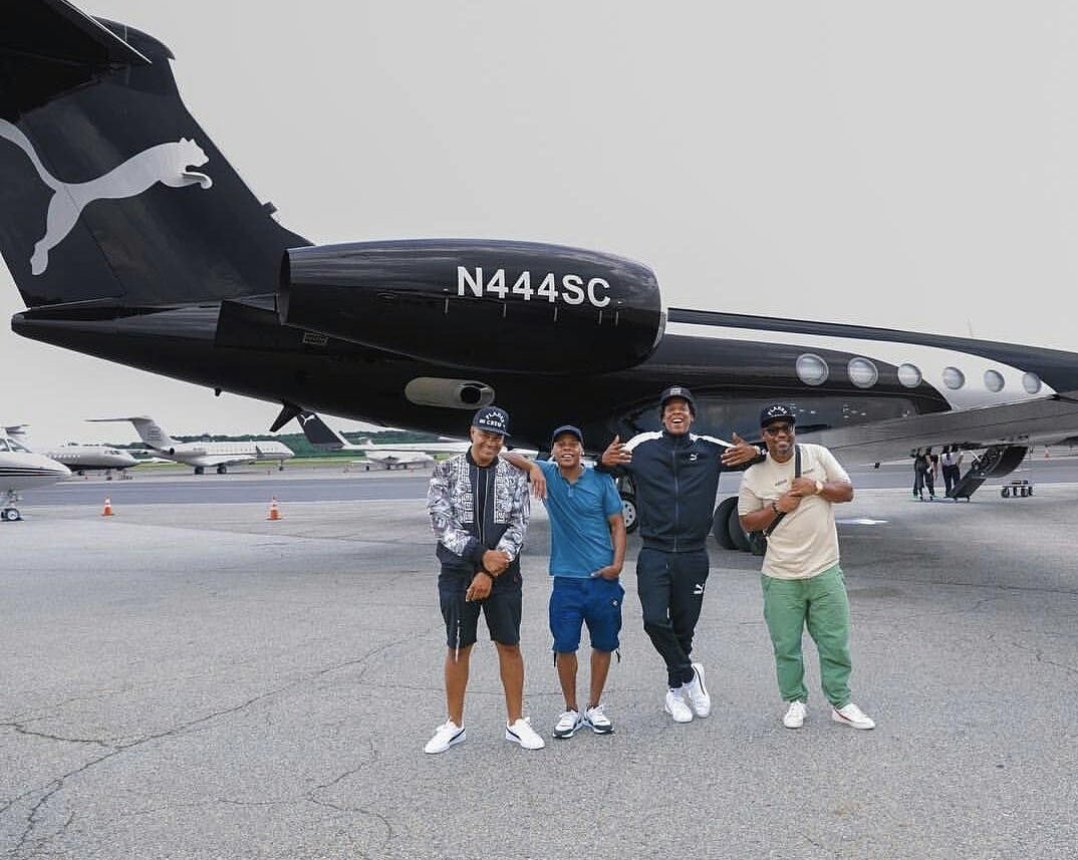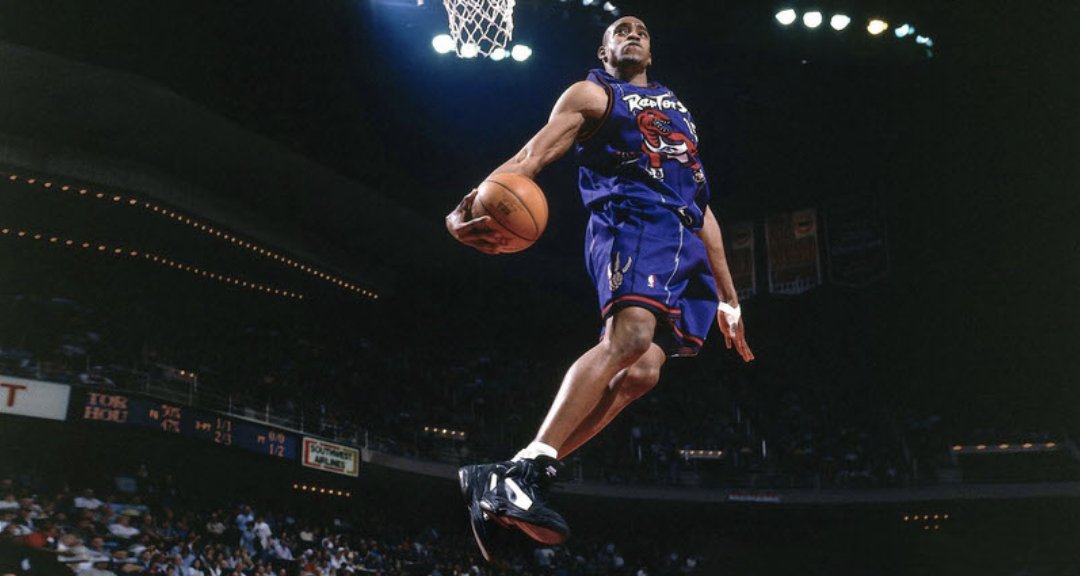
Hyperice, the leading sports recovery company, is set to become the next multi-billion-dollar sports business.
The part you didn't know?
Without Kobe Bryant, it would have never happened.
Time for a thread 👇👇👇
The part you didn't know?
Without Kobe Bryant, it would have never happened.
Time for a thread 👇👇👇

1) Let's start in 2007 — Anthony Katz is a 30-year-old high school teacher and basketball coach in Southern California.
For exercise, he regularly organizes pickup basketball games.
The only problem?
As he got older, the games started to leave him increasingly sore & fatigued.
For exercise, he regularly organizes pickup basketball games.
The only problem?
As he got older, the games started to leave him increasingly sore & fatigued.

2) Looking for a way to recover faster & prevent injury, Anthony Katz researched how professional athletes dealt with soreness & fatigue.
"I wanted to get the level of treatment the pros were getting."
A combo of elevation, ice & compression made sense — but ice bags didn't…
"I wanted to get the level of treatment the pros were getting."
A combo of elevation, ice & compression made sense — but ice bags didn't…
3) Despite ice bags being used by athletes all over the world, Anthony Katz saw one glaring issue.
As the ice melts, the bag fills with air — causing it to lose its coldness & compression.
Not to mention, they looked ugly.
Instead, Katz set out to engineer a better solution.

As the ice melts, the bag fills with air — causing it to lose its coldness & compression.
Not to mention, they looked ugly.
Instead, Katz set out to engineer a better solution.


4) In an effort to make his own ice compression wrap, Anthony Katz bought Neoprene from a Huntington Beach wetsuit maker, cut it with a knife, and sewed Velcro to hold the ice bag in place.
But would it work?
Next up — testing & feedback.
But would it work?
Next up — testing & feedback.

5) With a prototype in hand, Anthony Katz started looking for professional athletes to test his ice compression solution.
Why professional athletes?
"If it was good enough for them, it would be good enough for everyone else."
As for who, Katz swung for the fences…
Why professional athletes?
"If it was good enough for them, it would be good enough for everyone else."
As for who, Katz swung for the fences…
6) During the summer of 2007, Kobe Bryant was working out at UC Irvine — rather than the Lakers facility as he had requested a trade to Chicago.
Ryan Badrtalei, the youngest member of the UCI coaching staff, would open & close the gym for Kobe.
Badrtalei's friend?
Anthony Katz
Ryan Badrtalei, the youngest member of the UCI coaching staff, would open & close the gym for Kobe.
Badrtalei's friend?
Anthony Katz

7) After months of hesitation, Ryan Badrtalei finally approached Kobe — asking the Laker legend if he wanted to try Anthony Katz' invention.
Kobe, thinking it might give him an edge, graciously agreed.
Bryant told Katz he would use them for a month and provide feedback.
Kobe, thinking it might give him an edge, graciously agreed.
Bryant told Katz he would use them for a month and provide feedback.
8) Kobe met with Katz a month later, requesting an air valve so the ice would remain tight after it started melting.
Katz agreed, hired an engineer, and months later Kobe was wearing Hyperice on the Lakers bench.
Why Hyperice?
Kobe was wearing Nike Hyperdunks at the time.
Katz agreed, hired an engineer, and months later Kobe was wearing Hyperice on the Lakers bench.
Why Hyperice?
Kobe was wearing Nike Hyperdunks at the time.

9) After Kobe Bryant debuted Hyperice during an NBA game, players from all over the league started paying attention.
Within months, LeBron James, Blake Griffin, Carmelo Anthony, Chris Paul, and others all had samples they were using.
Katz' plan was working…
Within months, LeBron James, Blake Griffin, Carmelo Anthony, Chris Paul, and others all had samples they were using.
Katz' plan was working…

10) After seeing how helpful celebrity athletes were, Anthony Katz doubled down on an athlete investor approach.
Katz setup Hyperice as a corporation — retaining 1/3 of the shares himself, giving 1/3 to his engineer, and setting aside 1/3 for future athlete investors.
Katz setup Hyperice as a corporation — retaining 1/3 of the shares himself, giving 1/3 to his engineer, and setting aside 1/3 for future athlete investors.
11) As Hyperice products continued to penetrate locker rooms in every major professional sport, athlete investors came pouring in.
Early Hyperice investors include:
— @tpolamalu
— @blakegriffin23
— @lindseyvonn
— @Mark_Sanchez
— @RudyGay
— @_OlivierGiroud_
That's not all…
Early Hyperice investors include:
— @tpolamalu
— @blakegriffin23
— @lindseyvonn
— @Mark_Sanchez
— @RudyGay
— @_OlivierGiroud_
That's not all…

12) With celebrity approval and their audience as built-in distribution, Hyperice sales exploded.
Revenue:
2014: $1.5M
2020: $200M+
Once the product was good enough for the pros, every non-pro athlete in the world wanted to use Hyperice.
Next up...growth capital to scale.
Revenue:
2014: $1.5M
2020: $200M+
Once the product was good enough for the pros, every non-pro athlete in the world wanted to use Hyperice.
Next up...growth capital to scale.
13) In October, Hyperice raised $47 million Series A round, which valued the company at $700 million.
New investors include:
— @PatrickMahomes
— @JJWatt
— @naomiosaka
— @TheTraeYoung
— @rickiefowler
— @God_Son80
— @CMC_22
— @BenSimmons25
— @AntDavis23
— @CP3
New investors include:
— @PatrickMahomes
— @JJWatt
— @naomiosaka
— @TheTraeYoung
— @rickiefowler
— @God_Son80
— @CMC_22
— @BenSimmons25
— @AntDavis23
— @CP3

14) Everyone always talks about product-market fit, but Anthony Katz took it one step further.
He knew Kobe Bryant was always looking for an edge.
By incorporating the ideal customer in the product development process, Hyperice changed the way that athletes train forever.
He knew Kobe Bryant was always looking for an edge.
By incorporating the ideal customer in the product development process, Hyperice changed the way that athletes train forever.
15) The Hyperice story catches people's attention because of the $700 million valuation.
The more interesting part is that the founder gave up more than 60% of the equity on Day 1, in hopes of securing the perfect team.
At $700 million valuation, I'm sure he doing just fine :)
The more interesting part is that the founder gave up more than 60% of the equity on Day 1, in hopes of securing the perfect team.
At $700 million valuation, I'm sure he doing just fine :)

16) And for those who don’t think a recovery company can be worth $1B+ — think about this.
Chiefs players were drinking soda & smoking cigarettes during halftime of Super Bowl I, while it’s now normal for an athlete to sleep in a $150k hyperbaric chamber.
Times have changed...
Chiefs players were drinking soda & smoking cigarettes during halftime of Super Bowl I, while it’s now normal for an athlete to sleep in a $150k hyperbaric chamber.
Times have changed...

If you enjoyed this thread, you should:
1. Follow me, I tweet cool sports stories everyday.
2. Subscribe to my free daily newsletter where I give detailed analysis on topics involving the money and business behind sports.
readhuddleup.com
1. Follow me, I tweet cool sports stories everyday.
2. Subscribe to my free daily newsletter where I give detailed analysis on topics involving the money and business behind sports.
readhuddleup.com
Also, don't forget @AthleticBrewing is the reason I'm able to create sports business content full-time.
If you want to support me, buy some beer - it's really great stuff.
Use code "JOE25" for 25% off at athleticbrewing.com
If you want to support me, buy some beer - it's really great stuff.
Use code "JOE25" for 25% off at athleticbrewing.com
• • •
Missing some Tweet in this thread? You can try to
force a refresh














